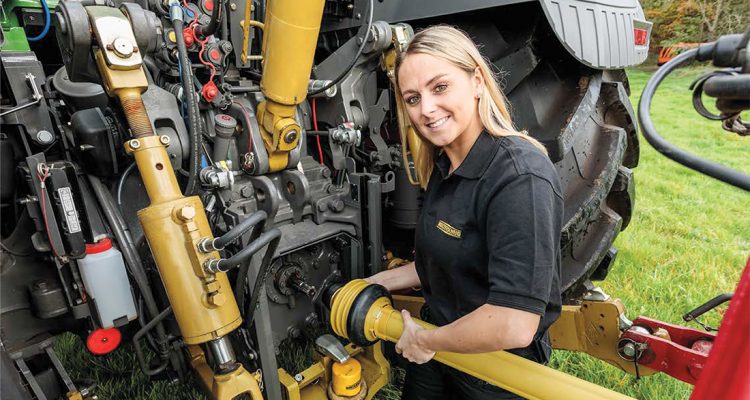Motivated by a constant push for improvement, the latest PTO driveline guard design from Walterscheid offers improved safety for the Australian farming segment.
Agriculture remains one of the most dangerous fields to work in Australia – with tractor-related deaths and injuries occurring from runovers, rollovers and entanglement in power take-off (PTO) shafts.
To help increase safety and reduce injury, as well as improve performance, Walterscheid, a recognised leader in agricultural PTO drivelines, has designed a new PTO guard, says Business Manager, Andrew Sawyer.
“The agricultural industry has become very focused on safety, particularly around guarding because people were getting injured – and some were getting killed – by drivelines, in fact this is still a key problem today,” he stresses. “Which is what has motivated Walterscheid to continually improve on our design of a PTO guard.”
As part of the Motion family, customers nationwide have access to genuine Walterscheid manufactured parts and solutions, including the PTO safety guard. This latest iteration to a safety guard has been many years in the making.
“Walterscheid has been designing PTO guarding since their first PTO drivelines went out to market, but the latest design not only meets regulations but is in line with the quality that Australian farmers have come to expect from Walterscheid,” Andrew explains. “It features three interlocking ribs around the diameter, male and female, that lock into each other. This is classed as ST, for ‘Safety Triangle’, three points being a triangle.”
As per regulation, guards shouldn’t rotate – which is why the interlocking ribs are key to the ST guard design.
“There are anchors, or chains, for the guards to be anchored and chained down at each end so if an operator or someone around the equipment gets near the driveline, the guard should be stationary even if the driveshaft is spinning,” Andrew explains. “That is how it should be.”
Despite constant improvements in products and farming practices, Andrew says safety inspectors still encounter drivelines with safety guards removed. He warns that removing guarding not only compromises safety but has a detrimental effect on performance too.
“Guards are there for a reason, not only to protect people, but to keep the componentry clean and greased and allow them to work effectively,” he says. “Drivelines don’t run on fresh air alone – they need greasing. The guarding helps protect the grease; it helps keep the dust away from the grease applied to the driveline, whether it’s on the universals, the sliding tubes or the sliding profiles.”
Guarding also helps keep the driveline from overheating.
“Operators or farmers often don’t realise how much force is being applied to the ends when drivelines are prevented from moving freely and not properly greased,” he cautions. “Guarding is critical to keeping the driveline clean and the grease in the area that it needs to be.”
In Australia, Andrew says the new ST guard design can be purchased as part of a complete guard set or as individual componentry.
“We look at it from a service perspective that we will service this in the best way we can to satisfy the customer. It’s not about the biggest sale; it’s about making customers happy so they will come back, whether they buy the complete guard set or only the newest guard tube.”
While the sales for the new guard have been strong coming off the back of the harvesting period, Motion’s stock holdings are in good shape.




